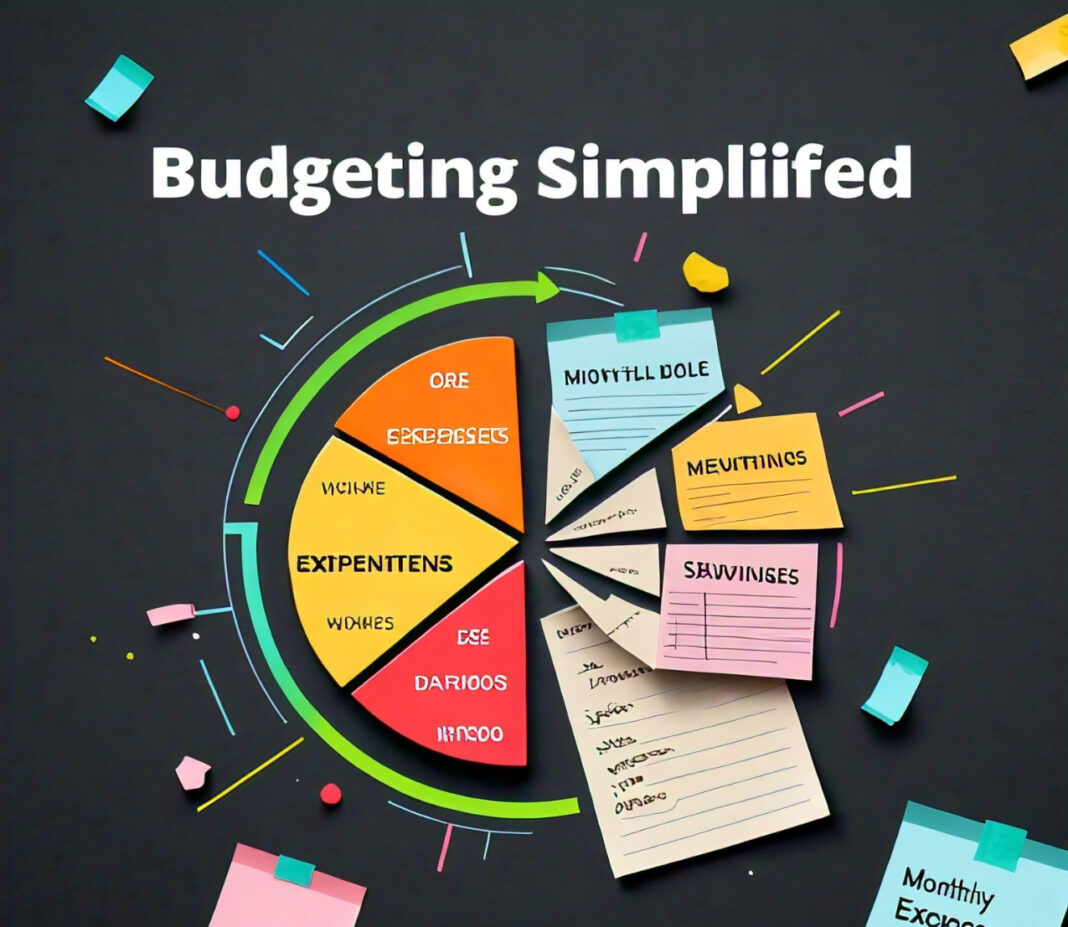Budgeting is the key to creating financial stability, which will help you achieve your long-term financial goals. However, with so many budgeting methods available, it can be tough to know where to start. One of the most popular and unsubstantiated budgeting strategies is the 50/30/20 rule. This rule simplifies budgeting by dividing an individual’s income into needs, wants, and savings or debt repayment.

In this article, we are going to explain the 50/30/20 rule, show how one is supposed to use it, and discuss the reasons why such a principle can be regarded as an effective way to budget, provided one is interested in taking control of their finances.
1. What is the 50/30/20 Rule?
The 50/30/20 rule represents that no-frills, realistic approach to budgeting whereby your after-tax income is apportioned into three big categories, namely:
- 50% for Needs
- 30% for Wants
- 20% for Savings or Debt Repayment
This system was first popularized by Senator Elizabeth Warren and her daughter Amelia Warren Tyagi in their book, All Your Worth: The Ultimate Lifetime Money Plan. The idea is that if you can balance your spending in these three categories, then you can meet your essential needs and still indulge in some of your wants while continuing to make progress toward savings or debt repayment.
Let’s break down each of these categories in more detail.
2. 50% for Needs
The greatest percentage-50% of your budget-shall go to needs, otherwise known as necessary living expenses. These are the things that you cannot do without and have to pay come what may.
What Constitutes a Need?
Needs are the just basic things you need to keep your life running; these include:
- Housing: Rent, mortgage, property taxes, and home insurance.
- Utilities: Electricity, water, gas, and trash collection.
- Groceries: Food and basic household supplies.
- Transportation: Car payment, fuel, public transportation, and car insurance
- Healthcare: Health insurance premium, medicines, doctor visits where necessary
- Debt Minimum Payments: If you have any debt, minimum payments become a need; failure to pay these damages your credit score.
But within this category, one needs to identify the needs from the wants. For example, dining out is considered a want and groceries are a need. Similarly, while having a car may be essential to get to work, upgrading to a better class of vehicle would fall under wants category.
How to Keep Needs Within 50%
Adjust if all needs above exceed 50% of income. You could house in a cheaper house, use less of the utilities, or move to a cheaper insurance plan. This way, you will be within your 50% boundary and have money to be spent on wants and put some away in savings.
3. 30% for Wants
The next 30% of your income should go to discretionary spending, or wants. This is the category in which you can spend your money on non-essential items that enhance the quality of life, and basically, are pleasurable.
What Constitutes a Want?
Wants are those things on which you spend money, not being essential to live, yet adding to a better quality lifestyle. Examples include:
- Dining Out: Restaurants, takeouts, or even coffee shops.
- Entertainment: Movies, concerts, streaming subscriptions, and hobbies.
- Shopping: Clothing, gadgets, or home décor items not necessarily needed.
- Vacations and Travel: Trips and leisure travel for fun.
- Luxury Services: Salon visits, spa treatments, or upgrading to premium services.
While wants are enjoyable and, at times, very appealing, this expenditure must not be more than 30% of the overall expenditure. Spending too much on wants may render one unstable financially as these leave little or no room for either saving or repayment of debts.
Enjoyment vs. Attainment of Financial Goals
This 50/30/20 rule lets you enjoy life without guilt, throwing around money on your favorite things. You can have all that dining out, entertainment, and shopping but still be in a good budgeting shape with 30 percent budgeting for wants. However, being mindful of this then helps not to go overboard and keeps your budget on track.
4. **20% for Savings or Debt Repayment
The last 20% would go toward saving, investments, or debt repayment. This share of your income constitutes financial security for you, paying debts, and long-term goals.
Building an Emergency Fund
In that 20%, one of the first things to put your attention to is building up an emergency fund. An emergency fund is simply a savings account for coverage in times of sudden, unexpected expenses-a lot of medical bills, fixing one’s car, or even a job loss. If at all possible, you want to save three to six months’ worth of living expenses in your emergency fund.
Saving for Retirement
Once you have built up a good-sized emergency fund, you can start to use that additional money for retirement. Create a retirement fund through an account such as a 401(k), IRA, or Roth IRA. Most employers have matching funds available in a 401(k), so take advantage of that if your employer offers that.
Paying Down Debt
If you have high-interest debt, such as credit card balances, it’s important to dedicate a portion of the 20% toward chipping away at that principal amount. Paying off your debt will save you money on interest and further optimize your financial health.
Investing for Future Goals
Beyond retirement, it is good to take part of this 20% and invest in other goals that are long-term. It could mean investing in stocks, real estate, or even a college fund for your children. This provides leverage for growing wealth and securing the future economically.
5. **How to Apply the 50/30/20 Rule to Your Income
Now that we have gone through each category, let’s look at how to apply the 50/30/20 rule on your own income.
Step 1: Calculate Your After-Tax Income
The first thing you do when applying the 50/30/20 rule is determining your after-tax income. The after-tax income will be the amount that you actually receive after taxes, health insurance, and retirement contributions are taken out of the check. If you are self-employed or receive irregular income, calculate an average monthly income to budget with.
Step 2: Divide Your Income According to the Rule
Second, once you know what your after-tax income is, you divide it according to the 50/30/20 rule:
- 50% Needs
- 30% Wants
- 20% Savings or Debt Repayment
For example, if your net income is $3,000 a month, you would invest $1,500 into needs, $900 to wants, and $600 toward saving or the repayment of debts.
Step 3: Track Your Spending
To ensure that you remain within your budget, track what you spend in each category. Most third-party budgeting applications, such as Mint or YNAB, will be able to assist you in tracking your expenses by categorizing different types of spending and monitoring that for you. As you track your spending, you can make the proper adjustments to remain within the 50/30/20 limit.
6. Benefits of the 50/30/20 Rule
There are several benefits that come with the 50/30/20 rule, particularly for beginner budgeters.
- Easy to Comprehend and Put into Practice: The 50/30/20 rule is so simple in its formation that it does not annoy you much with complicated calculations or many budget groups.
- It’s Balanced: The best thing about this rule is that it allows one to have a perfect balance between enjoying life and fulfilling financial responsibilities, never forgetting life ahead.
- Flexible and Adaptable: The percentage in the 50/30/20 rule can be adjusted based on your specific financial situation. If you’re focused on paying down debt, for instance, you can put more than 20% toward that goal.
7. Common Mistakes to Avoid with the 50/30/20 Rule
While the 50/30/20 rule is a pretty good guide, it is necessary to refrain from some mistakes that will help in reaping the most benefit from this budgeting technique.
- Not classifying wants as needs: This is one mistake wherein wants are treated as needs. One must be honest with oneself when classifying your expenditures to avoid overspending on discretionaries.
- Not adjusting for changes: Your financial situation may change over time, either through increasing your salary, changing to a new house, or any other added expense. You must adjust the budget accordingly in order for you to be on track.
Not Prioritizing Debt Repayment: If you have high-interest debt, then try to pay it off as quickly as possible. The desire to put more into the wants category may be very strong, but debt reduction should take precedence.
8. Adjusting the 50/30/20 Rule to Suit Your Lifestyle
While this is an excellent guideline, the 50/30/20 rule can be rehashed to suit your goals and lifestyle better. As situations might change in your life, depending on your situation, you would likely have to move the percentage one way or another.
- High-Income Earners: A person who earns a high income could use a little smaller percentage for needs, thus allowing a big percent to be placed either into savings or investments.
For Low-Income Earners: The low-income-earners barely have the capacity to afford many needs with the money in the 50 percent. This may then mean you either cut back on wants or time savings contributions until your income improves.
In many ways, this is an adaptable investment strategy in some areas of your life. Take advantage of the 50/30/20 rule to best suit your personal goals and solutions to financial problems.
Conclusion
The 50/30/20 rule is mainly a wonderful budgeting principle, simplifying the process of managing your money. One can strike a balance by apportioning their income into needs, wants, and savings or debt repayment.






